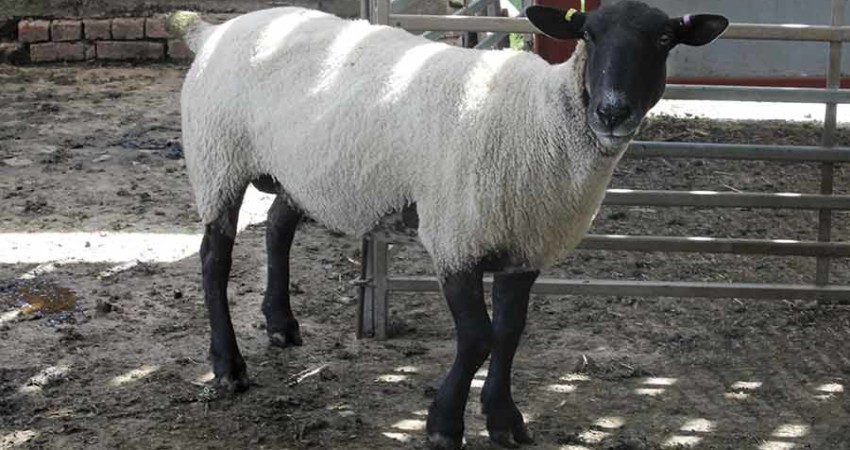

Foot scald and footrot become much more common during prolonged spells of wet weather and they are not easy to deal with. It’s well worth making an effort to prevent them developing in the first place and to treat them promptly if they do. If untreated there is a real risk of foot abscesses developing. Treating these requires veterinary treatment over a long period of time and it’s often not successful.
Foot scald (interdigital dermatitis) is a bacterial infection of the skin between the toes. It starts when wet muddy macerated skin becomes infected. It can develop very quickly, even overnight, and it’s very painful. Sheep often go down on their knees to try to relieve the pain. The skin can become thickened and roughened. It responds well to antiseptic spraying (the blue oxytetracycline spray), especially if the feet can be kept dry after treatment.
Foot bathing is another effective treatment,10% zinc sulphate is cheap and it works. The longer the soak the more effective it is, at least 5 minutes and up to 15 minutes if the problem is severe.
Untreated and persistent foot scald can lead to footrot and foot abscesses, much nastier conditions. So if your sheep have scald it’s important to put them all through foot baths every few weeks until ground conditions become drier.
Footrot is caused by a combination of bacteria and it causes severe pain because of under-running and separation of the hoof wall from the sensitive tissue underneath. This can result in hoof deformities. Some sheep that are have had footrot for a long time may eventually show no signs of lameness, but they can carry and spread the disease.
Veterinary treatment with long-acting antibiotics can be effective. If can make the treatment more effective if you stand the sheep on dry ground for 24 hours after they’ve been injected, and put them through a zinc sulphate footbath too. This can lead to big improvements within a few days.
Some sheep are much more susceptible to footrot than others, it seems to be at least partly genetic, so if possible, cull any sheep that don’t respond to treatment, or keep them separate for more intensive treatments and to prevent continuous contamination of the ground.
There is a footrot vaccine which might help in some flocks. If you have an on-going problem, it would be worth discussing vaccination with your vet. Two shots are needed and protection can be expected for up to 4 months.
Trimming over-grown hoof is sensible but it’s important not to cause any bleeding. If you cut into sensitive tissues the damage will take a long time to heal.
 Contact Jaguza Support
Contact Jaguza Support